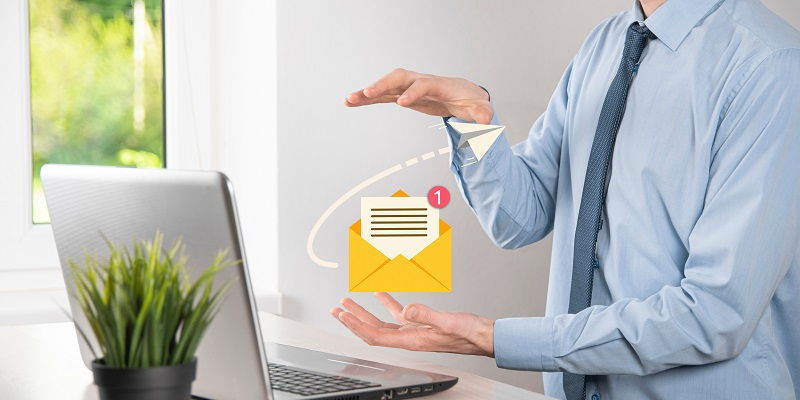Confirmation emails play a crucial role in ensuring effective communication and providing essential information to customers. They serve as more than just a courtesy; these emails can contain crucial details that are important for users to access and utilize a product or service. However, delivery issues often pose challenges, causing these vital messages to go unnoticed or blocked. In this article, we will delve into the significance of confirmation emails and discuss practical strategies to ensure their successful delivery.
The Importance of Confirmation Emails and Their Content
Confirmation emails play a significant role in establishing trust and credibility with customers. They serve as reassurance that a transaction or action has been successfully completed and provide important information, such as order details, account activation links, or appointment confirmations. More than just a courtesy, these emails are an integral part of the user experience, enhancing customer satisfaction and ensuring smooth interactions.
Following Basic Email Good Practices for Successful Delivery
To enhance the chances of successful delivery, it is essential to adhere to basic email best practices. These practices include optimizing email subject lines, using a recognizable sender name, avoiding spam-triggering words, personalizing the email content, and ensuring a clear call-to-action. By following these best practices, you can increase the likelihood of your confirmation emails reaching the intended recipients’ inboxes.
Despite adhering to email best practices, delivery issues may persist. In such cases, sending confirmation emails as plain text (rather than HTML) can improve deliverability. Plain text emails have a higher chance of bypassing spam filters and reaching the recipients’ inbox. While plain text emails lack the visual appeal of HTML emails, they can effectively deliver important information without being hindered by spam filters.
Checking Online for Similar Issues and Gathering More Data
If confirmation emails continue to be blocked or undelivered, it is vital to investigate the issue further. One effective approach is to seek information online by researching specific email service providers, reviewing support forums, or checking for similar cases. This process helps in gathering more data and understanding potential causes or solutions for the specific delivery issue.
Escalating the Issue to the Company’s Systems Admin for Unblocking
If all previous efforts to resolve delivery issues have been exhausted, it may be necessary to escalate the problem to the company’s systems administrator responsible for email infrastructure. This individual or team can assess the situation, identify potential blockages or misconfigurations, and take appropriate actions to unblock email delivery successfully.
Communicating Effectively with the Systems Administrator by Being Polite and Grateful
When contacting the systems administrator regarding email delivery issues, it is crucial to adopt a polite and grateful approach. Recognize the importance of their role and express gratitude for their assistance. Clearly explain the problem, provide any relevant data or evidence gathered, and request their support in resolving the issue. Building a positive rapport with the systems administrator can greatly aid in reaching a solution efficiently.
Informing Users about the Expected Confirmation Email on the Confirmation Page
To prevent customer confusion and frustration, it is important to set clear expectations regarding confirmation emails. The confirmation page should prominently mention that a confirmation email should be received within a certain timeframe and provide instructions for any further actions if the email is not received. This proactive approach ensures that customers are aware of the confirmation email and can take the necessary steps in case of non-receipt.
Offering Alternative Methods of Confirmation Delivery
In situations where email delivery issues persist, it may be prudent to offer alternative methods for confirming transactions or actions. Requesting a secondary email address or phone number during the confirmation process can enable the delivery of important information through alternative channels. Following up later through these alternative methods helps ensure that essential details reach the users, even if the confirmation email is undelivered or blocked.
Making the Confirmation Email Irrelevant by Including Necessary Information on the Confirmation Page
In some cases, it may be possible to render the confirmation email irrelevant by including all the essential information on the confirmation page itself. By providing users with immediate access to the necessary details, such as order numbers, appointment details, or activation links on the confirmation page, reliance on email delivery is minimized. This eliminates the risk of delivery issues and guarantees that customers receive crucial information promptly.
Confirmation emails are more than just a courtesy, they hold essential information crucial to the user experience. Employing basic email best practices, such as sending plain text emails when necessary and effectively communicating with systems administrators, is key to ensuring successful delivery. By informing users, offering alternative methods, and making confirmation emails irrelevant when possible, businesses can guarantee that crucial information reaches their customers. Prioritizing the reliable delivery of confirmation emails ultimately enhances customer satisfaction, trust, and overall business success.

